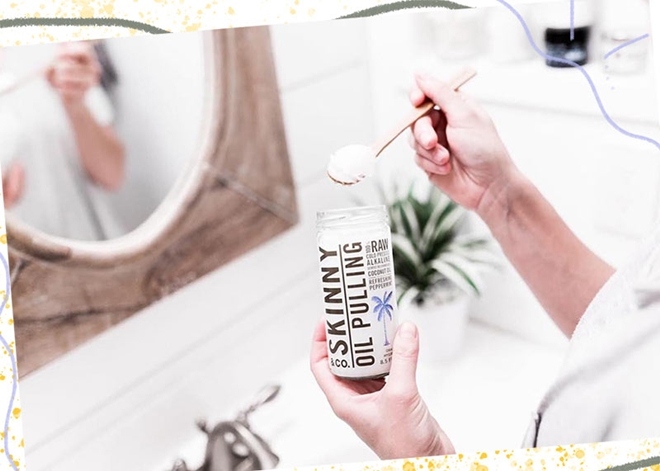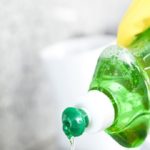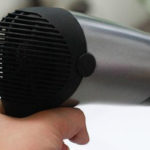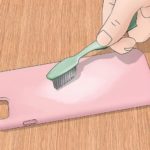1. Whiten teeth with oil
“Oil pulling,” the act of swishing oil around in your mouth, is an ancient Ayurvedic practice that originated in India more than 4000 years ago to improve oral and overall health. Traditional oils used include sesame oil, coconut oil, sunflower oil, and olive oil. The main mechanism of action is saponification, meaning that when the oil is swished around enzymes in the mouth react with the oil to create a saponification process, resulting in the release of beneficial fatty acids from the oil and creating a mechanical cleansing action that helps remove stubborn plaque on the teeth.
The most notable benefit of oil pulling is that it helps remove some bacteria, reduce bad breath, and accumulate plaque. This can also help prevent gum inflammation and other oral problems caused by bacteria, and it can also safely prevent bacteria from entering the bloodstream through the mouth.
How to perform:
• You can add a few drops of peppermint or cinnamon essential oil to improve the flavor and enjoy additional cooling and antibacterial effects.
• Put ½ – 1 tablespoon of oil in your mouth and start swishing gently around.
• If you want to strictly adhere to Ayurvedic standards, remember to swish the oil around in your mouth for 20 minutes. Focus on brushing it back and forth on your teeth, even in between if possible. If you cannot withstand swishing the oil for too long, you can do it for a few minutes and then hold it in your mouth.
• Rinse your mouth with warm water to remove the oil residue, then brush your teeth and use dental floss as usual. You can also oil pull after brushing your teeth.

2. Whiten teeth with activated charcoal
Activated charcoal is a form of carbon that is processed at high temperatures in an alkaline environment, typically made from coal, coconut shell, wood, rice husk, or bamboo. It has the ability to absorb dirt and debris, as well as chemicals, so manufacturers incorporate it into toothpaste to enhance the cleaning and whitening effects. You can whiten your teeth at home with activated charcoal using simple and safe methods (but be careful not to use it for a long time as it can damage tooth enamel).
Method 1: Activated charcoal and toothpaste. Brush for about 2-3 minutes, then rinse thoroughly with water. Apply 3-4 times per week for best results.
Method 2: Activated charcoal and salt. Mix activated charcoal and salt with clean water, stir well until the mixture thickens. Dip a soft toothbrush into the mixture and brush your teeth evenly on both the inner and outer surfaces for about 3 minutes. Apply 3-4 times per week for best results.
Method 3: Activated charcoal, coconut oil, and sea salt. Prepare the three ingredients in a ratio of 1:1:1. Use a soft toothbrush to brush evenly in each area in a circular motion. Then rinse your mouth thoroughly with saline water to remove the residue of activated charcoal. Perform daily for effective teeth whitening and fresh breath.
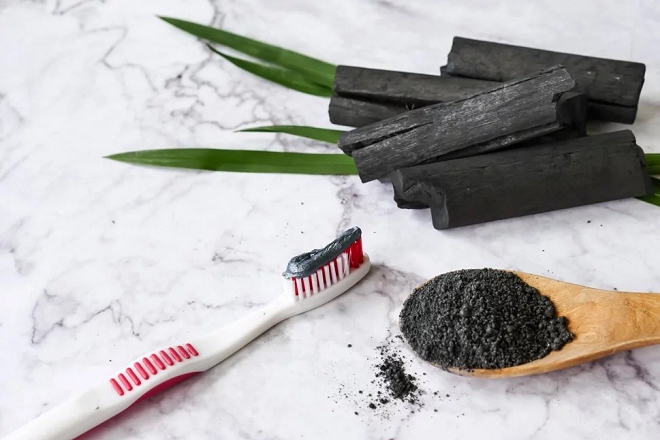
3. Teeth whitening with baking soda
Baking soda is not only used for skin care and treating blackheads… but it also has excellent teeth whitening properties, so many people use it for a bright white smile. In fact, many toothpaste brands have incorporated baking soda into their toothpaste to enhance the effectiveness of oral hygiene. That’s why whitening your teeth with baking soda at home is completely justified and can be done using these simple methods.
Method 1: Combine baking soda with water. Mix a tablespoon of baking soda with clean water to create a mixture with moderate consistency. Then dip your toothbrush into this mixture and brush your teeth as usual. You can also combine it with toothpaste for better results. Finally, rinse your mouth with clean water.
Method 2: Combine baking soda with vinegar. You should choose rice vinegar, white vinegar or lemon juice along with a little salt to create a mixture. Then use this mixture to gently brush your teeth for about 2 minutes. Finally, brush your teeth again with regular toothpaste to clean your mouth.

























